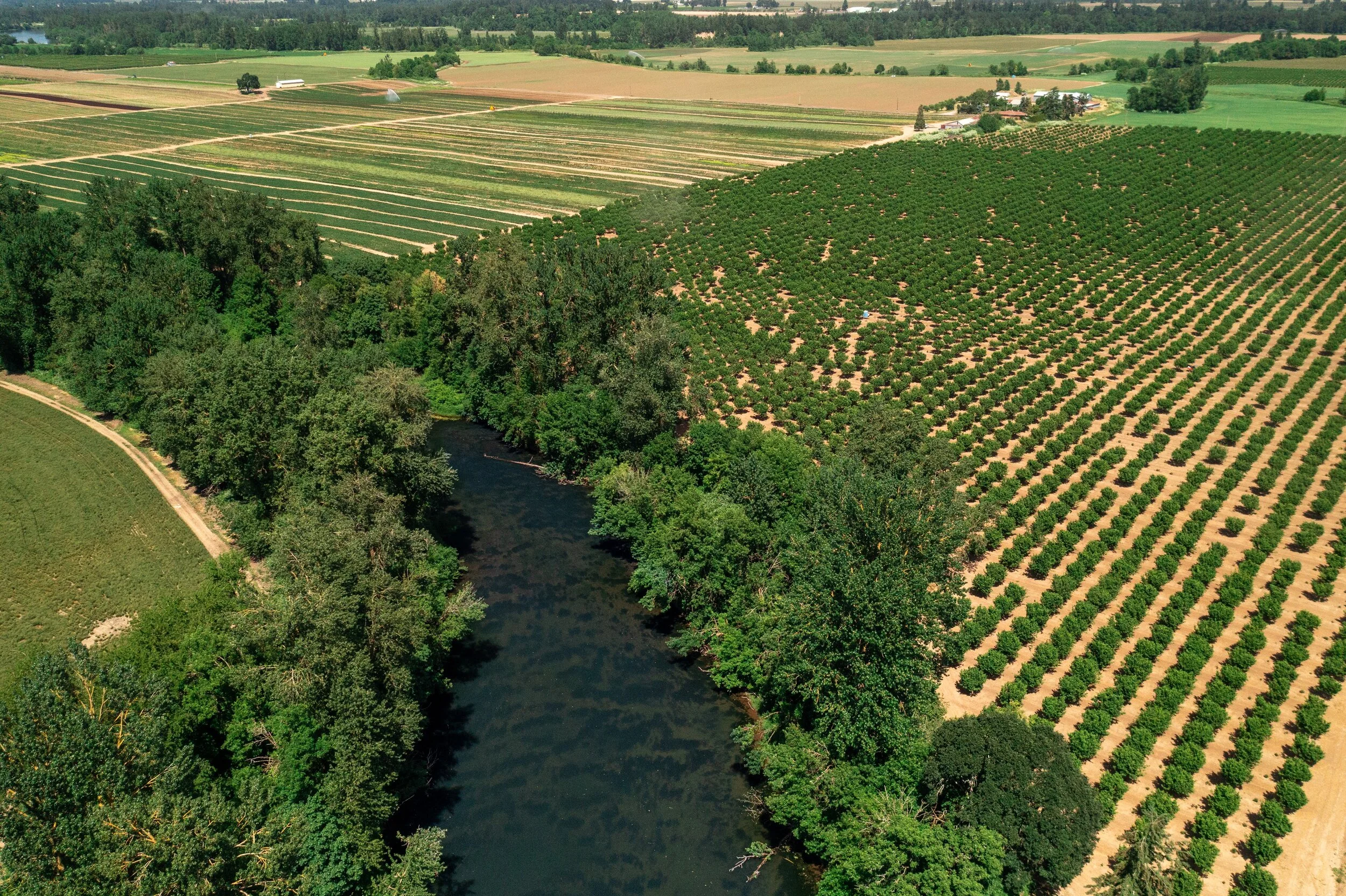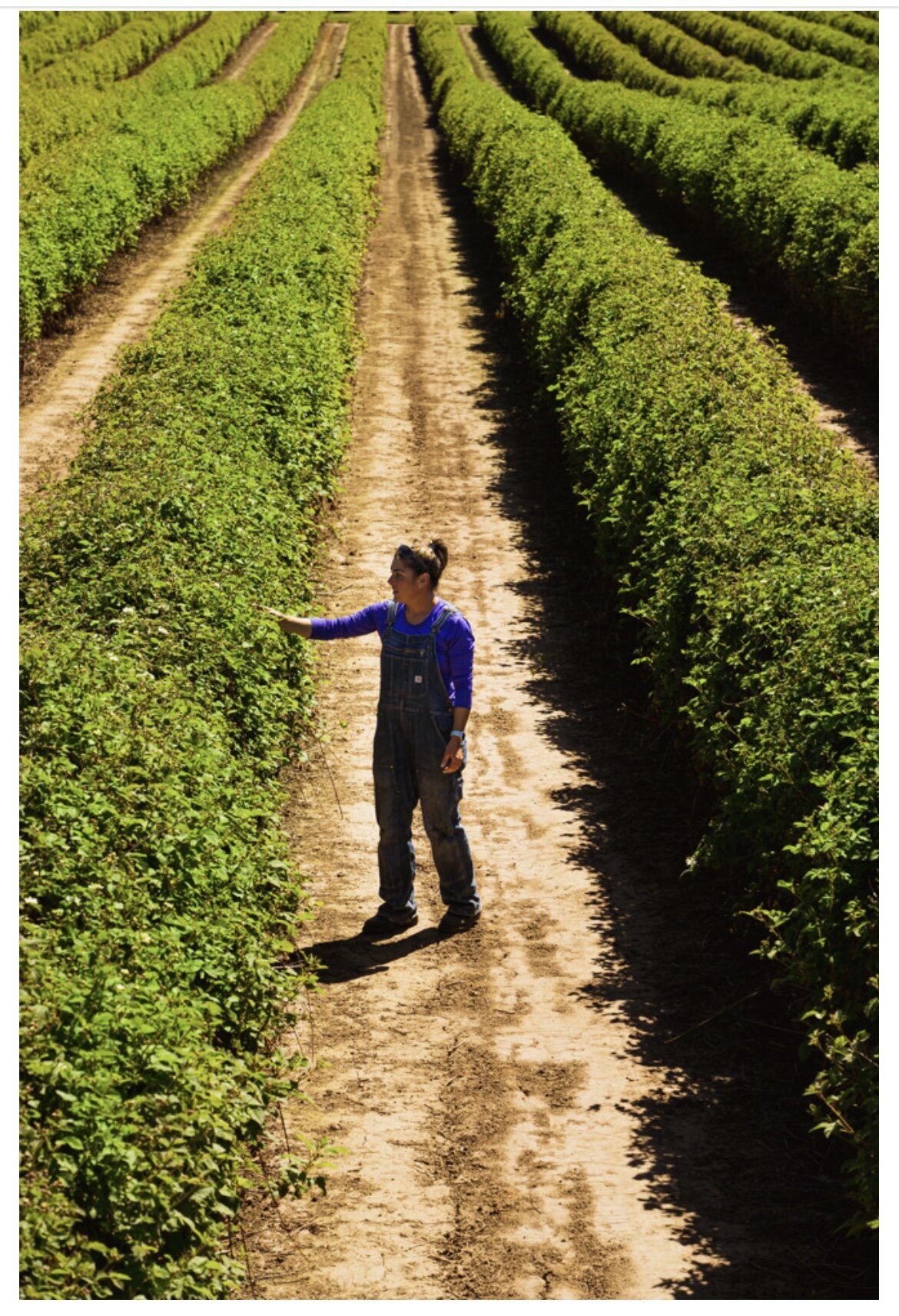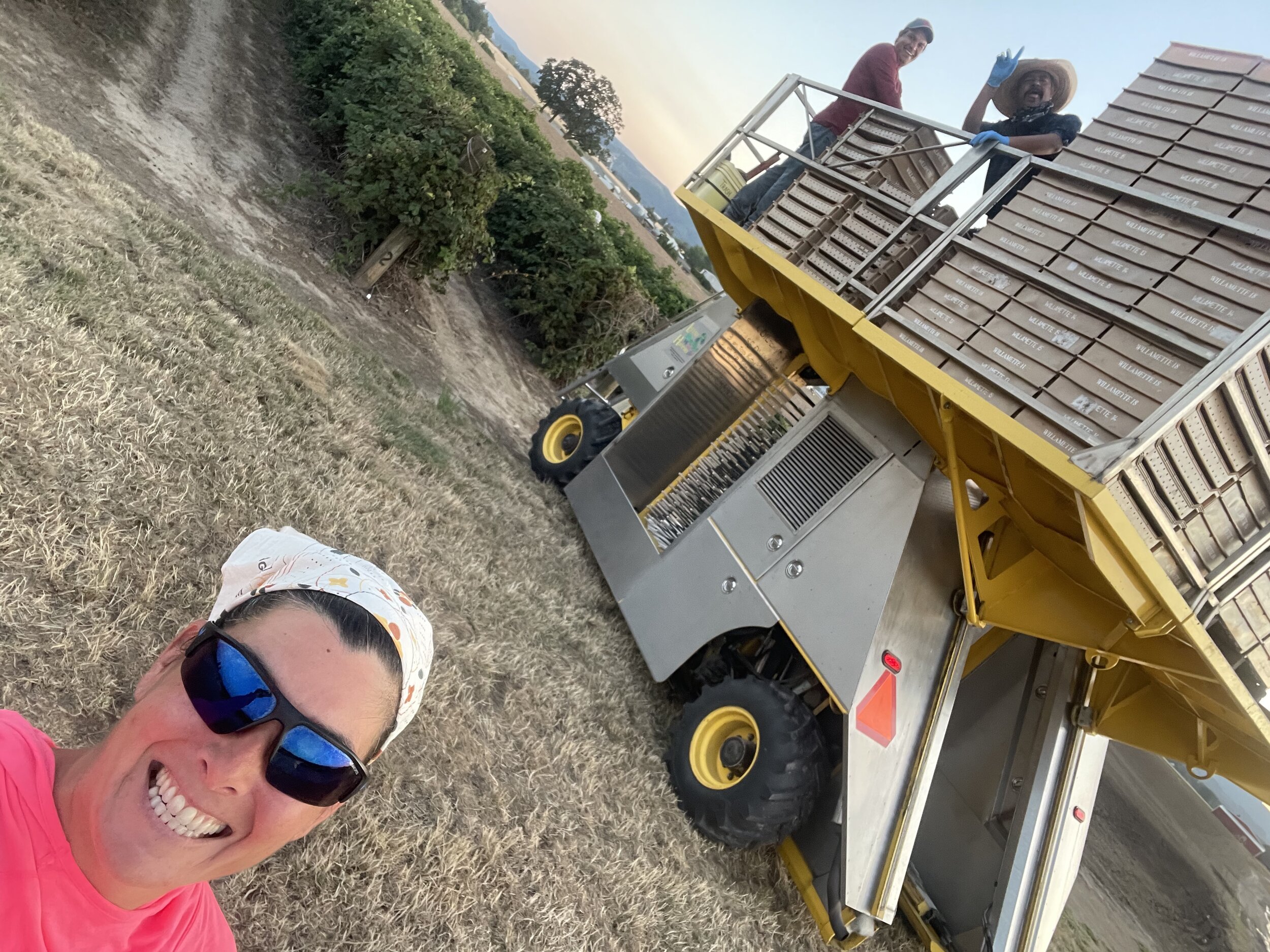Jacque Duyck Jones of Duyck Family Farm LLC shares her experience and the impact of June’s heat dome on her farm’s blackberry harvest.
First bloom. Photo: Stark Photography
Jacque and her father. Photo: Stark Photography
My dad and I own Duyck Family Farm LLC, and I am 4th generation here at the “Homeplace”. We raise about 50 acres of Kotata blackberries, 16 acres of blueberries, and we rotate grass, wheat, clover, and sugar beet seed. Up until this year, we have never had such an extreme catastrophic event due to weather during harvest.
I love being a blackberry grower and raising high quality fruit for the world to enjoy. I think it's so amazing that each cane produces fruit once in its life. We take care of our Kotata blackberry canes year round; the “primocanes” that are growing now are the producers of next year's fruit. First bloom for the Kotata blackberries is always around the first week of May. This year, first bloom was between May 5th-8th as anticipated and was beautiful. After first bloom, we arrange with our beekeeper to bring bee hives to our field for pollination so that our fruit can form to its potential, strong and full of nutrients.
Sharing about bloom is important because everything leading up to the heat wave went as usual. We take care of the crop, the inputs, the labor. Heat is beyond our control. Farmers work regardless of temperature or obstacles to get things done. With the heat and UV rays, we were certainly anticipating damage to the cane berries but didn’t know what it would look like. When we had the forecast of heat, we were still tucking in the canes.
June 22nd - blackberries before the heat dome.
The heat impacted the number of hours our crew could work safely. We arranged for shortened hours or time off, which is never ideal from our crew’s perspective because fewer hours can sometimes impact their housing situations. We were absolutely accommodating to the situation and adjusted the hours, knowing that certain things were just not going to get done before harvest as they have been in previous years.
We used the date of first bloom to project harvest to begin around the 5th of July (also an average year start date) and we were all set with our processor. The fruit had already set since the flowers were already pollinated and the berries already forming. Leading up to the heat, we increased irrigation in order to keep the plants hydrated. In this part of Oregon we have water available, which we pay for. So this is not a story about damage from drought but is specifically about heat and UV ray impact damaging the commodity itself.
The plants can sustain heat and come out of stress. The fruit, the blackberries themselves, cannot handle the UV and heat damage. One option for preventing this damage was to overhead irrigate the blackberries, but that has the potential to damage to the blackberries by encouraging mold. My dad and I decided to apply a biofilm to the Kotata blackberries as an attempt to protect our crop and future primocanes from the heat and UV rays. Because of the stage the blackberries were at during the heat wave, the fruit was burned and singed onto the fruit spurs.
On average, we harvest the Kotata blackberries six times per year, in the month of July at their peak ripeness for the highest quality for consumers. Because of the heat, we tried picking blackberries early to get what we could before they were damaged further by the sun and UV.
Heat damaged blackberries.
On June 27, we started to see the drupelets (the little round cells of a caneberry) becoming blistered. At 1pm, I checked my phone. I never check my phone to see how hot it is. It is perhaps one the most evil things to do to yourself when you're working outside, to check what the actual temperature is, so I don't typically look. But I did that day. And at 1pm, the UV index was 10, which was extreme. We thought that the berries that were still ripening were going to fill up. But on June 28 at 6am, we recorded berries as being cracked, hard, and shriveled, especially on the west side of the row. On an average year a few drupelets on a fruit spur might be blistered, but this year whole blackberries were crispy.
The damage that was done in the Pacific Northwest from the three days of extreme heat and UV index will have a bigger impact on Oregon and the ag infrastructures than people realize. It not only impacted farmers and their livelihoods but their employees, the work being done, harvest, quality, processors, and market prices.
It wasn't until my dad said “Jacque, we worked all year on these blackberries. And now they're all burnt up” that it really hit me. I was just trying to be so strong. That harvest was hours going up and down rows, hours fixing tile lines, hours tucking and throwing canes. So many hours being a steward of the land.
I am so proud of the Oregon Raspberry and Blackberry Commission for being such a proactive commission in advocating for their growers, processors, and the caneberry industry. They’ve done amazing and important work.
Farmers often feel alone in their situations. They have their neighbors, they have their communities…but when you're trying to ask for help, it can be very lonely, and it feels like an uphill battle. I'm fortunate to have state representatives that will continue dialogues with me, answer the phone, reply to emails and come visit. Elected officials were notified and responsive, and we thank them for their support in valuing agriculture as an economic driver in not only Oregon, but the United States.
Jacque at work with the blackberry canes. Photo: Stark Photography
I believe that the caneberries raised in the Pacific Northwest are the highest quality and best caneberries anyone can buy, whether it's U-pick or processed, organic or conventional. I believe that all forms of agriculture in the Pacific Northwest are extremely special, and that taking care of the farmland and raising these crops has a huge impact on the Oregon economy and way of life. I hope that consumers looking to buy fruit for smoothies or pies will look for Oregon or (if the label’s unclear) USA blackberries, because 90% of US blackberries are from the Pacific Northwest. The blackberries from Oregon are most often found in the freezer aisle. Those bags of fruit were picked at peak ripeness and then individually quick-frozen (IQF) to be enjoyed year round.
Oregonians buying Oregon and USA are supporting agriculture, which is a huge component of Oregon’s economy. According to the Oregon Raspberry & Blackberry Commission, Oregon ranks number one in the United States in frozen blackberry, marionberry, and black raspberry production, and is a top 5 producer of frozen red raspberries and boysenberries. Oregon State University estimated the value of Oregon’s 2019 blackberry harvest at $31,115,000.00.
Farmers are diligent stewards of the land. We are following regulations of food safety, worker safety, the additional OSHA rules that come and go, and fueling others with food and fiber as we do for our own families.
To Oregonians and all travelers going through rural areas - whether it's a scenic route or a back road that the GPS took you on - when you drive carefully and wave at a farmer, it makes a world of a difference. Thank you to OAT for protecting ag lands, partnering and sharing the story of ag with Oregonians and advocating for all components of the ag economy and infrastructure.







